Subfamily Elaninae Phylum Chordata Rank Species | Scientific name Elanoides forficatus Higher classification Elanoides | |
 | ||
Genus ElanoidesVieillot, 1818 Similar Mississippi kite, White‑tailed kite, Short‑tailed hawk, Snail kite, Ictinia | ||
A swallow tailed kite flying
The swallow-tailed kite (Elanoides forficatus) is an elanid kite which breeds from the southeastern United States to eastern Peru and northern Argentina. Most North and Central American breeders winter in South America where the species is resident year round. It was formerly named Falco forficatus.
Contents
- A swallow tailed kite flying
- Swallow tailed kite
- Taxonomy and systematics
- Description
- Habitat and behavior
- Diet
- Reproduction
- Conservation in the United States
- References
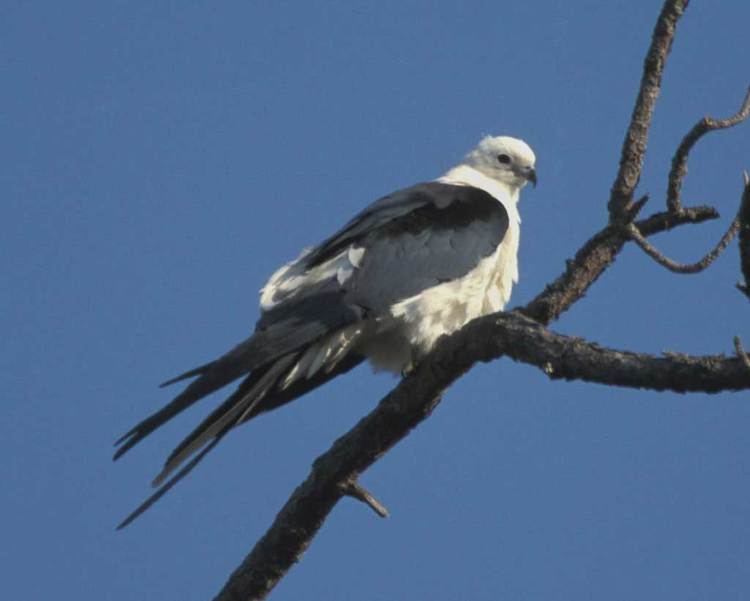
Swallow tailed kite
Taxonomy and systematics
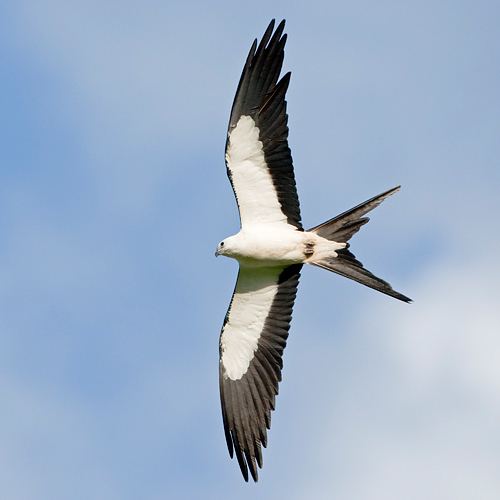
The swallow-tailed kite was first described as the "swallow-tail hawk" and "accipiter cauda furcata" (forked-tail hawk) by the English naturalist Mark Catesby in 1731. It was given the binomial scientific name Falco forficatus by Carl Linnaeus in the 10th edition of Systema Naturae, published in 1758; he changed this to Falco furcatus in the 12th edition of 1766. The latter spelling was used widely during the 18th and 19th centuries, but the original spelling has precedence. The genus Elanoides was introduced by the French ornithologist Louis Jean Pierre Vieillot in 1818. The name is from Ancient Greek elanos for "kite" and -oides for "resembling".
Description
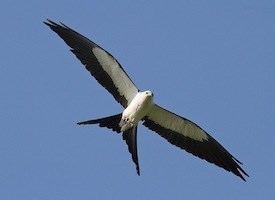
The species is 50 to 68 cm (20 to 27 in) in length, with a wingspan of approximately 1.12–1.36 m (3.7–4.5 ft). Male and female individuals appear similar. The body weight is 310–600 g (11–21 oz). The body is a contrasting deep black and white. The flight feathers, tail, feet, bill are all black. Another characteristic is the elongated, forked tail at 27.5–37 centimetres (10.8–14.6 in), hence the name swallow-tailed. The wings are also relatively elongated, as the wing chord measures 39–45 cm (15–18 in). The tarsus is fairly short for the size of the bird at 3.3 cm (1.3 in).
Young swallow-tailed kites are duller in color than the adults, and the tail is not as deeply forked.
Habitat and behavior
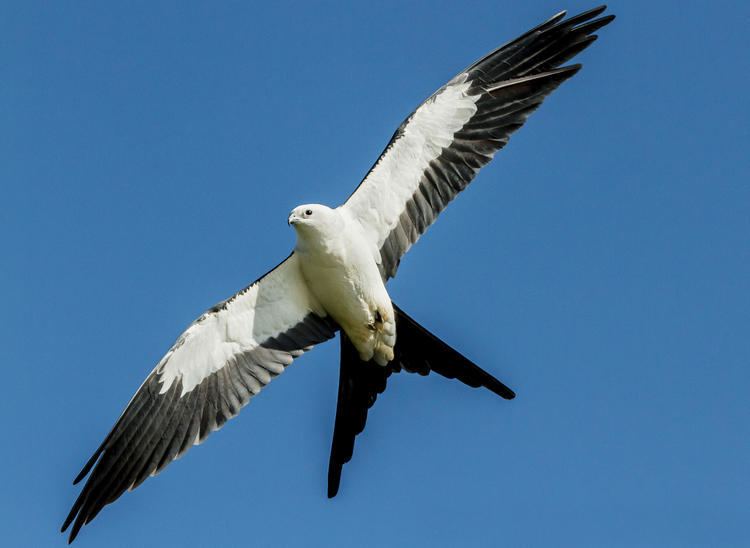
Swallow-tailed kites inhabit mostly woodland and forested wetlands near nesting locations. Nests are built in trees, usually near water. Both male and female participate in building the nest.
Sometimes a high-pitched chirp is emitted, though the birds mostly remain silent.
Diet
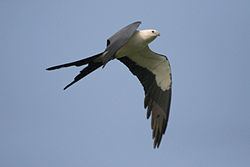
The swallow-tailed kite feeds on small reptiles, such as snakes and lizards. It may also feed on small amphibians such as frogs; large insects, such as grasshoppers, crickets; small birds and eggs; and small mammals including bats. It has been observed to regularly consume fruit in Central America. It drinks by skimming the surface and collecting water in its beak.
Reproduction
Mating occurs from March to May, with the female laying 2 to 4 eggs. Incubation lasts 28 days, and 36 to 42 days to fledge.
Conservation in the United States
Swallow-tailed kites are not listed as endangered or threatened by the federal government in the United States. They are listed as endangered by the state of South Carolina and as threatened by the state of Texas. They are listed as "rare" by the state of Georgia. Destruction of habitats is chiefly responsible for the decline in numbers. A key conservation area is the Lower Suwannee National Wildlife Refuge in Florida.
